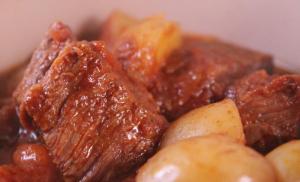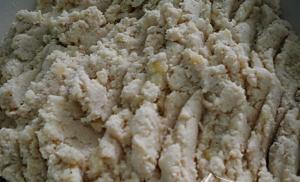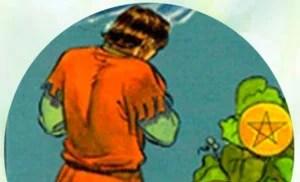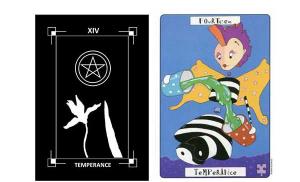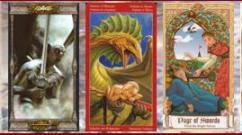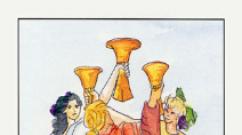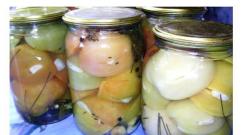Flea market Saint-Ouen. The history of flea markets
The history of flea markets
The flea market is a place that absolutely attracts different people: here are real connoisseurs and connoisseurs of antiques, casual tourists, hunters for inexpensive goods, designers, directors and simply lovers of antiques and now fashionable vintage things. Everyone, coming there, hopes for good luck and everyone can find their own goods there: from unique antiques to a simple thing that has gone out of use.
Reselling old things as a phenomenon has existed for a long time, this was especially true when there were few things, many of them were made by hand and it was unthinkable to simply throw them away. With the development of industrial production, more and more things began to appear, people stopped appreciating their uniqueness and often began to throw them directly onto the streets.
The first flea markets originated in France. In Paris, in the square near the Saint-Médard church on Rue Mouffetard, there was a place where ragpickers brought all the things they collected at night around the city. By the end of the 19th century, so many things were thrown away that junk dealers could no longer cope with this volume, then large iron boxes first appeared on the streets, where people were asked to throw away all unnecessary things. Around the same time, in the struggle for the cleanliness and hygiene of the city, ragpickers begin to be pushed out of the city. Many traders settle in the suburban area of Saint-Ouen. It was there that the first civilized market appeared, where used things were sold, which began to be called Marché aux puces de Saint-Ouen (Saint-Ouen Flea Market). Soon the market received official permission to this day it is considered one of the largest in Europe.
When the Saint Ouen market became official, the area around it began to be landscaped, traders began to be charged a tax per place, and wealthy collectors began to increasingly come to the market in search of unusual things.
Where did this name “flea market” come from? There are many assumptions and conjectures on this matter. Most likely, the name “flea market” is due to the fact that the places where trade took place were far from hygienic at that time, and things were often found literally in the trash heap. It is possible that this name speaks of very low “flea” prices and an abundance of all sorts of small things on the market. One of the legends says that a famous lover of antiques once found himself at this market and saw from a height piles of antique furniture, all kinds of gizmos and clothes, and exclaimed: “By God, this is a flea market!” A couple more associations also suggest themselves: a person rummaging through a pile of things resembles a person looking for fleas, and the passion for searching for valuable things in a pile of junk can be infected as easily as catching fleas. But in any case, no matter where this name came from, it took root among the people, and soon became officially established, appearing on postcards.
Soon, flea markets began to appear throughout Europe: in the UK (Portobello), Germany (Tiergarten), Italy (Porta Portese), in Russia (Levsha in Moscow and Udelny in St. Petersburg). Markets began to bear the same name, essentially being a literal translation of the French marché aux puces (flea market - English; Flohmarkt - German; flea market - Russian, etc.).
Flea markets are of great interest around the world today. There are many legends associated with the existence of these places, because only at a flea market can you accidentally and almost for nothing buy a real work of art.
Swap meet ( marché aux puces) is a market under open air, which does not sell food.
Origin of the name "flea market"
According to one version, a certain military man, conducting an inspection from the heights of the fortifications of Paris in 1880, compared the crowd of people in the market to fleas. According to another version, such markets received this name due to the fact that junk dealers there sold old clothes, often with lice (lice and fleas are one word in French). The expression “flea market” quickly became popular and already in 1990 it appeared on postcards with views of Paris.

Paris flea markets
The first markets for selling used items appeared in the Middle Ages. They were located at first in the city center, but then rag traders began to move to the outskirts. In 1635, Richelieu banned trade in used goods within the capital in order to stimulate trade in new goods. Traders of non-new goods, who were poetically called “moon catchers,” settled outside the borders of Paris.
Saint Ouen
The official year of birth of the Saint-Ouen flea market is 1885. Now it is the most famous and largest gathering place for antique dealers in the world. The market attracts up to 5 million visitors annually.

Due to the popularity of the market, only official tenant traders have recently been allowed to trade there.
The market is divided into 14 smaller markets (Antica, Biron, Cambo, Dauphine, Django Reinhardt, Jules Vallès, le Passage, Malassis, Malik, l'Entrepôt, Paul Bert Serpette, des Rues et brocantes, L'Usine & Lécuyer et Vernaison) . Some are located outdoors, others are indoors. They all sell things different eras And different countries. There are classic antiques, restored furniture, paintings, sculptures, carpets, mirrors, dishes, lamps... old records, engravings, children's toys, posters, books, photographs and other unusual things. Finally, here you can buy clothes, shoes, accessories, both vintage and the latest in fashion.

The Saint-Ouen market is the 4th of the.
Since 2001, the Saint-Ouen market has been listed as an architectural heritage site. Walk through the market – unique opportunity discover another side of Paris; it will be a walk with surprises and a golden mine for lovers of vintage and antiques. Some parts of the market are more like museums or art galleries than shopping malls. The main shopping street is Rue Rosier, which leads to the Malassis, Dauphine, Biron and Vernaison markets. This is the universe random finds. In addition, here you will find many cafes and restaurants with a pleasant, welcoming atmosphere.

IN last years the market is changing. In Paris, it is fashionable to decorate apartments, and many young Parisians come here for unusual things. The first “flea market store” appeared - Quintessence Playground. And a trendy restaurant is Ma Cocotte, opened by the famous French designer Philippe Starck. The restaurant concept is a chic dining room ( http://www.macocotte-lespuces.com/ ).

Days and times of the Saint-Ouen flea market
Market open:
Saturdays 9.00 – 18.00
Sundays 10.00 – 18.00
Monday 11.00 – 17.00
In the first half of August, traders may be partially on vacation.
Those who think that flea markets have sunk into oblivion or remained only abroad are mistaken. In many Russian cities, fleas continue to exist. And it’s a pity that only a few initiates know about them. After all, flea markets are amazing place, where you can touch history, find a piece of your seemingly long-gone childhood and just have a good time.
Why and who needs flea markets
If you cannot digest organically, then you have nothing to do at flea markets. But lovers of antiquities, handicraftsmen of all stripes, people with a developed spirit of treasure hunting will find a lot of interesting things for themselves there.So, one of my friends found herself on the flea market for the first time looking for an old candy dish. She inherited a beautiful vase made of glass and forged metal from her beloved grandmother, but was broken by her children. My friend was very upset and tried to find the same one at a junk fair. And imagine, not the first time, but she succeeded. Her joy knew no bounds.
I know those who have found many interesting things for mere pennies. After all, you can buy there, if not absolutely everything, then a lot.
Old Soviet and pre-revolutionary Christmas tree decorations, silverware, Kuznetsov porcelain, captured German binoculars, incredibly beautiful dolls - this is far from full list what my gaze rested on. But these are my interests.
In general, at flea markets everyone can find something for themselves. I saw beaming men who bought locomotives and carriages for a toy railway, as in their childhood, happy girls who found homespun embroidered towels for a friend’s wedding, children clinging to a rocking horse with a long silky mane, and in general the most people different ages and no less different levels income.
How to find a flea?
IN small towns It is quite easy to spot a flea. Wherever we went, it was enough for us to turn to a few passers-by at any city market. If not every second person, then certainly every fourth or fifth knew about the location of the junk fairs.Unfortunately, in small populated areas and flea markets are tiny, most often serving as an annex to regular shopping arcades. However, you can find a lot of interesting things on them too.
If you are looking for a flea market in a millionaire city, then I advise you to first look at information about them on the Internet; you will definitely find several addresses.
Get ready for the trip!
If you are going to a flea market for the first time, especially without a guide experienced in this kind of pastime, then you should prepare for the trip:1. Take care of comfortable clothes and shoes, as well as drink. Most domestic “fleas” are far from the cleanest and most comfortable places in the world. In muddy or slushy conditions they are usually very dirty. And in hot weather, you often have to dream of shade. Benches, clean toilets, and the opportunity to have a snack and buy water - this is something that visitors to domestic flea markets can only dream about.
2. Carry small cash with you. Prices at flea markets are sometimes surprisingly low, and sellers are often tight with change. Therefore, it is better to exchange large bills in advance.
3. If it’s autumn or winter outside, it’s a good idea to grab a flashlight, or don’t forget your phone. As a rule, if there is street lighting at flea markets, it is weak, and it is better to examine the item you like in detail. Otherwise, in the dark, there is a risk of purchasing, instead of a Ming era vase, a jar painted by children in a circle at the Palace of Pioneers. Also an interesting artifact, of course, but, you see, of a slightly different level and cost.
Rules, laws and secrets of flea markets
It is better to go to flea markets as early as possible. No, you don’t have to arrive there at three in the morning. But at seven, or even six, most of the traders are already there. Moreover, even when daylight hours begin much later.You can and should bargain at flea markets, but keep in mind that such places surprisingly attract not only collectors, but also unhealthy people who react violently to any manifestation of disagreement or disrespect, in their opinion, of course. Unlucky and you met just such a seller? Leave without getting into an altercation. Save time and nerves.
At flea markets you also come across people who professionally buy antiques, vintage items and other rarities. They tend to have large and relatively well-equipped counters. Usually, at the very beginning of the trading day, they buy all the most interesting things from their grandparents, who brought their things to sell. “Professionals” are well versed in antiques, so it’s unlikely that you’ll be able to buy anything worthwhile from them for next to nothing. But it happens that they are ready to sell the item inexpensively. This happens if the antique item does not fit into their circle of interests and was bought “out of pity” or under the influence of mood. Then they are ready to sell it for a reasonable price.
Although flea market connoisseurs prefer to “go hunting” early in the day, so that before closing they can find something worthwhile. Sellers, not wanting to take home the remaining goods, especially large ones, often significantly reduce the price.
Unfortunately, you can also find scammers, pickpockets and simply dishonest people at flea markets. Therefore, be careful, cautious and careful. If you are going to the flea market for something specific, for example, old coins, first, at least study the “material parts” a little so as not to buy a remake.
So if you love antiques and simply unusual things, if you have a strong spirit, if you want to find something “from childhood” or pick up a gift for friends - arm yourself with the advice of our instructions and go ahead. For those who love flea markets and visit them often, we invite you to add your tips and observations in the comments, share your experiences and addresses of flea markets, and tell us about your purchases.
Prices are usually formed based on the size of the flea market itself, the usefulness of the product is taken into account, as well as the method of its production - manual or industrial. It is interesting that such an “unpoetic” designation for similar places as a “flea” market came to us from the French language.
Flea market at this moment It is customary to call a place where some old things are bought or, on the contrary, sold. Usually the cost of such products is not very high, but among the old things there is an opportunity to come across true works of antique art, in which case you will naturally be lucky. Since this is a market, prices also have their own effect. market system- in other words, in this case, the thing is truly valuable, then no one will sell it inexpensively.
 Flea markets located outside the city and in rural areas can usually offer their customers only old products. The city "flea" market can amuse you with the presence of not only old, but also quite new things that have not been used, or have been used completely unconventionally. Typically, all flea markets are located directly in the open air and are mainly aimed at ordinary person. Amazingly, a flea market can appear spontaneously and quite often in central regions cities. From time to time, to further recruit buyers, live music is played at such “spontaneous” meetings and small “street concerts” are organized. In general, for lovers of antiquities, the flea market may turn out to be a real treasure; in this case, do not disdain and rummage through the pile of old things that are offered for sale. Some creative people even draw inspiration from this, buying nineteenth-century boxes or an ancient, torn reticule embroidered with beads, which is later restored.
Flea markets located outside the city and in rural areas can usually offer their customers only old products. The city "flea" market can amuse you with the presence of not only old, but also quite new things that have not been used, or have been used completely unconventionally. Typically, all flea markets are located directly in the open air and are mainly aimed at ordinary person. Amazingly, a flea market can appear spontaneously and quite often in central regions cities. From time to time, to further recruit buyers, live music is played at such “spontaneous” meetings and small “street concerts” are organized. In general, for lovers of antiquities, the flea market may turn out to be a real treasure; in this case, do not disdain and rummage through the pile of old things that are offered for sale. Some creative people even draw inspiration from this, buying nineteenth-century boxes or an ancient, torn reticule embroidered with beads, which is later restored.
It is believed that the first “progenitor” of all “flea” markets was the French market in Saint-Ouen, which was called Marché aux puces. Then it was a big market, one of the 4 huge bazaars in Paris. Since the name - "flea" market - came specifically from the French language, it is logical what actually caused such a name. The fact is that historical “flea” markets were named after the clothes that were sold at them - they were significantly eaten by moths and there were fleas in them. It is curious that such spontaneous markets began to appear all the time, starting from the seventeenth century, only they became more and more convenient over time, and the product was sold there by junk dealers.
At the moment, “flea” markets are most widespread in Russia, where they are often called “flea markets,” and in Germany, where they are called Flohmarkt.
Materials provided from the website www.otvetin.ru
Why is the Flea Market called a flea market?" Why not a "lousy" or a "cockroach" or a "crush" or a "flea market" or a "free market of free Paris"? In France there is a saying: "He who goes to bed with dogs, in the morning wakes up with their fleas.” Maybe this is where the secret lies, maybe this is where the “dog is buried”? The history of the Flea Market is shrouded in a cloud of stories, legends and legends. They tell how a certain junk dealer named Davydoff bought it at Flea Market. market, paintings by Toulouse-Lautrec, thrown into the trash by his relatives, and became rich. They tell how daguerreotypes of the famous photographer Nadar were also accidentally bought at a flea market, which their ignorant owner decided to get rid of, and the lucky one who discovered them also became rich. the legendary romantic image of the Flea Market feeds on the squeaks of valuables in heaps of old trash, you can really get infected in the same way that you can get infected by collecting and searching. pirate treasure.
“He who goes to bed with dogs wakes up in the morning with their fleas.”
Marché aux puces - Paris Flea Market... Why flea market, why not cockroaches or lice??
Flea market in Paris... Why actually a flea market, why not cockroaches or lousy ones?? The Paris flea market has existed for over a hundred years. Several years ago it was declared a national treasure of the country. This means that its existence is no longer threatened, that no large sharks capitalism will not be able to oust honest junk dealers from their homes and build on this historical space some kind of glass-concrete hulk called “Oreal”, “Panasonic” or “Citroen”. However, now there are few junk dealers left at the Flea Market.
Nowadays the Flea Market can rather be called a wholesale antiques market. 70% of his clientele are wholesale buyers of antiques from countries such as the USA, New Zealand or Australia, in a word, from the New World. The tourist at the Flea Market appears as a tourist, not as a buyer. Its purpose is to gawk, not to buy. That romantic time has already become a thing of the past when antique dealers came to the Flea Market early on Saturday morning, even before it opened, and rummaged through heaps of junk, illuminating with flashlights everything that Parisian junk dealers - “brocantes” - tumbled out of their trucks and vans - That's what they are called in French. These are the people who collect or buy everything that residents want to throw out of their basements or attics. There are only a few such real junk dealers left at the Saint-Ouen Flea Market - about two or three dozen.
The fact is that the sources from which they drew their countless treasures have dried up. People stopped giving away or selling unnecessary things to junk dealers for a symbolic price. In France, two other forms and opportunities to get rid of old things have emerged and are thriving. The first form is to give these things to the Society of the Companions of Emmaus, founded by Abbot Pierre. These things are sold there, and the money goes to help the disadvantaged. The second form is the so-called “vide-grenier” operation for cleaning attics or basements. Such markets are organized once a year in every town, village, or district of the city. On this day, every resident can freely take out the things they want to get rid of and sell them. Let us note, however, that ordinary junk dealers (brokants), who make their living by selling used items, also take an active part in such events.
Collecting and reselling old things has always existed as a phenomenon. This activity was especially beneficial when things were scarce. Nothing was wasted, disappeared, or thrown away - everything went into use. Problems began to arise when more and more things began to appear, with the development of industry and with the advent of things of mass demand and widespread use. These things were simply thrown out onto the streets of Paris during the day, and at night they were picked up by junk dealers and then sold, first in Paris itself, and then outside the city. The only officially permitted place in Paris where this happened was the square near the Saint-Médard church on Rue Mouffetard. (Note in parentheses that the Flea Market on Rue Mouffetard existed until 1955).
In 1880, up to 75 tons of various discarded items were removed from Paris per year, but the moment came when the army of junk dealers could no longer cope with this flow of things. Then the prefect of Paris, named Pubel, took matters into his own hands. He ordered iron garbage boxes to be placed on the streets of the city, in which he obliged residents to put everything thrown out on the streets. This struggle for urban cleanliness and hygiene threatened the existence of the entire army of Parisian ragpickers, and became the impetus for at least two historical events Parisian life.
The first of these is the appearance in French the words "poubelle". This is the word for “garbage bin” in French. (The word “urn” also exists in French, but is used in other meanings: “urn with ashes” and “ballot box”).
The second event is the gradual displacement of junk dealers from Paris. They began to be pushed out beyond the city limits, which then ran along the line of city fortifications - the current Boulevard of Marshals or the small ring road of Paris. Ragmen began to occupy empty premises in the fortifications, in the so-called “Zone of Paris”, later glorified in Guillaume Apollinaire’s poem “The Zone”. Many of them settled in the suburb of Saint-Ouen, but the inhabitants of this suburb also fought for the cleanliness of the streets and hygiene. As a result, in 1886, the first civilized market for the sale of used items arose, which was called “Flea Market”.
This is where we come to the question we were going to answer today. Why the Flea Market itself? Why not “lousy” or “cockroach”, or just “flea market”, or “flea market”, or “free market of free Paris”? The answer to this question is not easy to give. Academic dictionaries do not provide any intelligible explanations on this matter. They usually say: “A flea market is a place in the suburbs of Paris where used things are sold.”
One of the explanations (or assumptions, since etymology is generally a dark science) can be found in the book of Jean Bedel, one of the most authoritative experts in the history of Paris and, in particular, the Flea Market. Jean Bedel is the author of a book published to mark the centenary of the Flea Market, called “The Flea Market is a Hundred Years.” The author connects the origin of the meaning of this expression with the French proverb “He who goes to bed with dogs wakes up in the morning with their fleas.” The meaning of the proverb is that bad, wrong actions necessarily have undesirable consequences. Indeed, if you sleep next to a dog, its fleas can easily migrate into your hair overnight. This also means that, just like dog fleas, you can become infected with something else, for example, by reselling things or searching among old things for real valuables that ignorant people throw in trash heaps.
The history of the Flea Market is shrouded in a cloud of a huge number of stories, legends and traditions. They tell how a certain junk dealer named Davydoff bought Toulouse-Lautrec paintings at the Flea Market, which his relatives had thrown in the trash, and became rich. They tell how, just as accidentally, daguerreotypes by the famous photographer Nadar were bought at a flea market, which their ignorant owner decided to get rid of. The lucky one who discovered them also became rich. All these many stories feed into the legendary romantic image of the Flea Market. You can really get infected by the scribbles of valuables in heaps of old trash, just as you can get infected by collecting and searching for pirate treasures or the mines of King Solomon. But this is only one component of the etymological assumptions.
The second part is more specific. Doesn't a person who rummages through a pile of old things resemble in his behavior someone who is looking for fleas? Rhetorical question... Of course, it reminds me. There is a third circumstance - purely French and purely linguistic. This is euphony. In French, the phrase “marché aux puces” is perceived as euphonious. It sounds more pleasant to the ear than, for example, “marché aux cafards” - “cockroach market”
And one more circumstance in which the name Flea Market appeared was an accident. Researchers and eyewitnesses claim that this expression was once accidentally dropped by someone in a conversation and everyone liked it, and therefore it stuck. As for its deep essence, no one really delved into it. Let us add that in its printed (not folklore) form the expression “flea market” first appeared not in newspapers, as one might assume, but in inscriptions on postcards. The fashion for postcards began to spread just at the end of the 19th century, precisely in those years when the first more or less civilized Parisian flea market appeared in the suburb of Saint-Ouen, receiving such unusual name- Swap meet.
